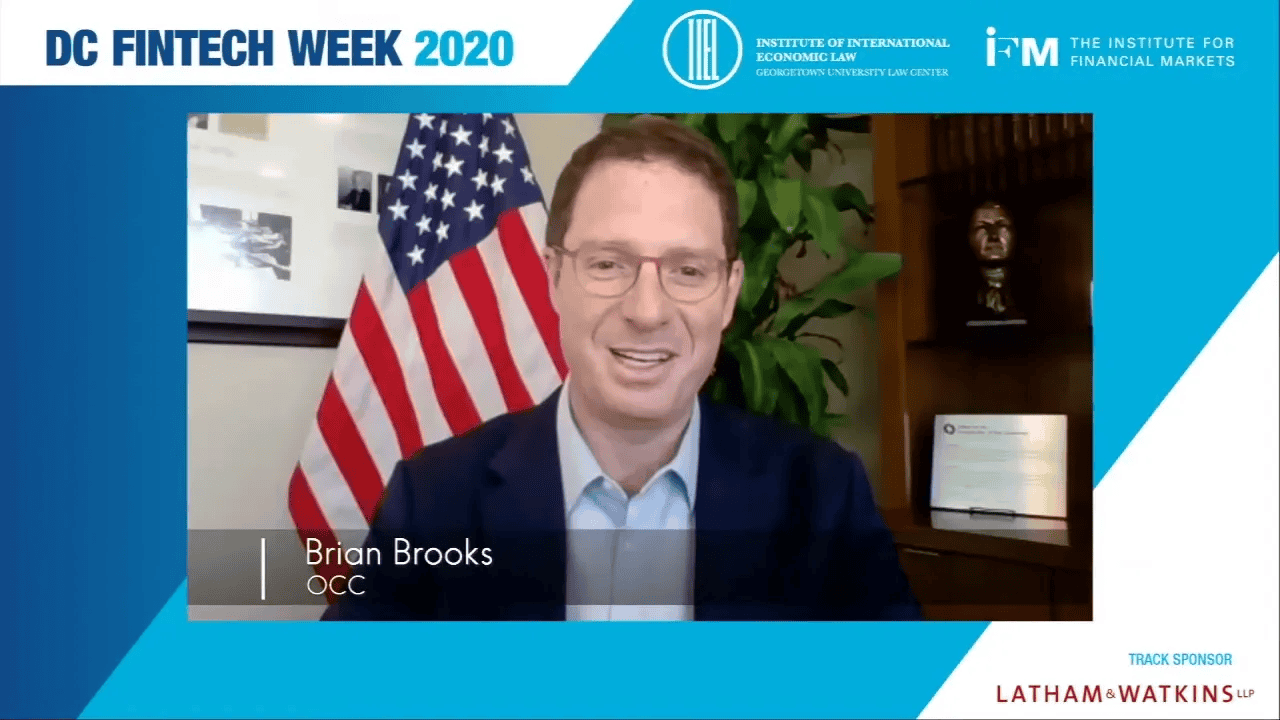Introduction to the New Competitors in Crypto
In the rapidly evolving world of cryptocurrency, a significant shift in competitive dynamics is emerging. Traditionally, major blockchain networks like Ethereum, Solana, and Bitcoin have been perceived as the primary competitors in the crypto ecosystem. However, a broader perspective reveals that the real competition extends beyond these blockchain giants. The true contenders in this space are now tech behemoths such as Microsoft, Apple, and Google.
The narrative is evolving as these tech giants increasingly integrate blockchain technologies into their operations and services. Their vast resources and technological prowess position them as formidable competitors capable of reshaping the digital currency landscape. This shift presents both challenges and opportunities for traditional crypto networks as they navigate an environment where innovation and adaptation are crucial for survival.

This section introduces these new competitors and sets the stage for exploring how tech giants are integrating into the crypto market, highlighting a significant paradigm shift that stakeholders must consider.
Tech Giants and Crypto Integration
The integration of crypto wallets by tech giants such as Google, Apple, and Microsoft could dramatically reshape the digital financial landscape. With the passage of new regulations, these companies might soon incorporate default crypto wallets into their systems. Imagine waking up to find Android, Facebook, or Windows with built-in crypto wallets. This integration would leverage their massive user bases and advanced technologies.
Potential Impact of Tech Giants Integrating Crypto Wallets
Tech companies have a significant user advantage due to their extensive reach and technological infrastructure. For instance, smartphones themselves can serve as secure digital ledgers. Many users are unaware that their phones have trusted execution environments that surpass the security of traditional hardware wallets like Ledger or Trezor.
Advantages of Tech Companies in the Crypto Space
If companies like Google or Apple decide to integrate crypto functionalities into their devices, users could benefit from enhanced security features such as hardware wallets on phones. These might offer three-factor authentication using a PIN code, fingerprint recognition, and trusted hardware devices. Additionally, cloud backups connected to Google or Apple accounts would provide encrypted account recovery options across all devices.
Discussion on User Base and Technological Advantages
The existing technological framework of these tech giants means they can offer superior security and convenience compared to traditional crypto solutions. The integration could provide seamless account recovery and cross-device functionality, potentially making cryptocurrencies more accessible to a broader audience.
Regulatory Changes and Opportunities
The landscape of cryptocurrency regulation is poised for significant shifts, creating both challenges and opportunities. As tech giants like Google and Apple, known for their extensive user bases and control over dominant operating systems, explore the crypto space, the competitive environment is intensifying. These tech behemoths are likely to leverage their vast networks by integrating stablecoins, potentially partnering with established players like Circle.
The prospect of stablecoin legislation is particularly transformative. If passed within the expected timeframe of around a hundred days, this legislation would clear the path for major companies such as Apple, Google, and Microsoft to engage with stablecoins without facing regulatory hurdles. The strategic advantage these companies hold—rooted in their control over platforms like Android, iOS, and Windows—positions them to become significant players in a market potentially worth twenty trillion dollars.
These developments highlight a crucial point: the regulatory environment can either be a barrier or a gateway for innovation. As these tech giants prepare to capitalize on new regulations, they are set to utilize their built-in user verification systems (KYC) across their platforms to maximize engagement in the crypto domain. This move could redefine market dynamics by merging real-world assets with digital currencies on a scale previously unseen.
Challenges for Current Blockchain Networks
Blockchain networks face several significant challenges in the current technological and competitive landscape. One major obstacle is the presence of tech giants like Microsoft and Amazon, which hold substantial competitive advantages. These companies boast vast resources, a massive customer base, and control over dominant platforms such as Windows. This creates an environment where smaller blockchain networks have difficulty competing solely on the basis of being better, faster, or cheaper.
Another challenge is related to the reliance on hosted solutions for blockchain nodes. Many blockchain networks depend on hosting services provided by giants like Amazon and Microsoft. This dependency poses a risk; if these companies decide to enforce end-user license agreements or other restrictions, they could effectively disable a network’s nodes, leading to a loss of consensus and operational capability.
Additionally, tech giants have the ability to leverage their own technological advancements such as confidential computing, which could surpass what current blockchain networks offer. This capability adds another layer of difficulty for smaller networks trying to establish themselves in the market.
These challenges highlight the need for blockchain networks to innovate beyond traditional parameters and find unique value propositions to sustain their growth against such formidable competitors.
The Concept of Quantum Money
Quantum money represents a groundbreaking approach to digital currency, leveraging the capabilities of trusted execution environments (TEEs) to enable unique features. Unlike traditional blockchain-based cryptocurrencies, quantum money operates without the need for a blockchain, allowing transactions to occur offline and off-chain. This is achieved through mechanisms such as proof of uniqueness and proof of secure erasure.
In the context of quantum money, proof of uniqueness ensures that a cryptographic key has no duplicates, meaning there is only one copy of that key in existence. The key can then be securely transferred from one trusted enclave to another. The proof of secure erasure guarantees that once the key is moved, it is permanently erased from the original location, ensuring the security and integrity of the transaction.
One of the most significant advantages of quantum money is its scalability. Since transactions do not need to settle on a blockchain, traditional limitations such as transactions per second (TPS) are no longer applicable. This leads to an infinitely scalable system where transactions are secure and private.
Furthermore, quantum money offers unparalleled privacy. Because no actual transaction record exists on a blockchain, it becomes impossible for external parties to track or understand value transfers between parties. This makes quantum money one of the most private forms of digital currency available.
Implementing Offline Crypto Transactions
Implementing offline crypto transactions involves using trusted execution environments (TEEs) to securely transfer digital assets without requiring an internet connection. This innovative approach mimics the simplicity of cash transactions, where the transfer of value is direct and private.
- Explanation of Offline Crypto Transactions
- Offline crypto transactions allow the transfer of cryptocurrency from one person to another without being connected to the blockchain network at the time of transaction. This is achieved by moving private keys between devices, ensuring that value is transferred securely and privately.
- Role of Trusted Execution Environments (TEEs)
- TEEs like AMD’s Secure Encrypted Virtualization (SEV), NVIDIA’s confidential compute, or Arm TrustZone facilitate offline transactions by ensuring that the private keys used in transactions are unique and cannot be duplicated or counterfeited. This is done through two main mechanisms: proof of uniqueness and proof of secure erasure.
- Proof of uniqueness ensures that only one copy of a private key exists, preventing unauthorized duplication. Proof of secure erasure guarantees that once a transaction is complete, the key on the sender’s device is securely erased, preventing any possibility of reuse or fraud.
- Practical Examples and Potential Applications
- A practical example involves two individuals transacting using their phones equipped with TEEs. When Person A wants to pay Person B, they securely transfer a private key representing a specific amount from their phone to Person B’s phone. Upon confirmation and secure erasure on Person A’s device, Person B now holds the value without needing an internet connection.
- This method allows for seamless peer-to-peer transactions in areas with limited or no internet access, expanding cryptocurrency’s usability in remote locations or during network outages.
Conclusion: The Future of Crypto and Tech Giants
As the crypto landscape evolves, the entry of tech giants into the industry presents both opportunities and challenges. These companies bring significant resources and technological expertise, which could drive innovation and expand the reach of cryptocurrencies. However, their involvement also raises concerns about market dominance and centralization, which could undermine the decentralized ethos of blockchain technology.
Looking ahead, the collaboration between tech giants and crypto startups could lead to groundbreaking developments, especially in areas like security, scalability, and user experience. As these entities navigate regulatory landscapes and technological hurdles, their efforts may result in more robust blockchain networks capable of handling increased user demand.
The competition between established tech companies and emerging crypto players is likely to spur further innovation. By leveraging their respective strengths, these organizations can contribute to a more dynamic and competitive market. The future of crypto may well depend on how these relationships develop and how effectively they address existing challenges.
Overall, the intersection of technology giants with the cryptocurrency sector heralds a new era for digital assets. By embracing collaboration while maintaining a commitment to decentralization, the industry can continue to thrive in an increasingly digital world.










